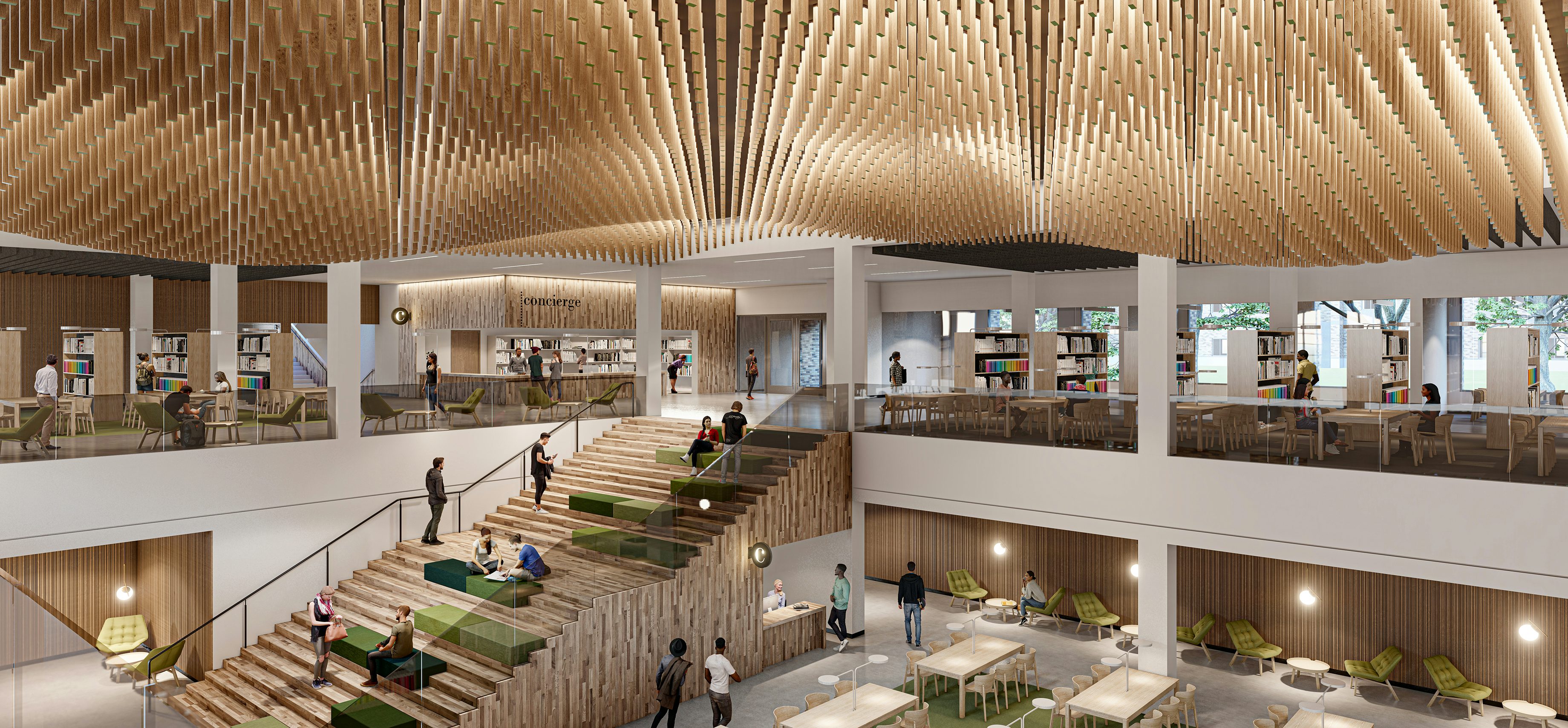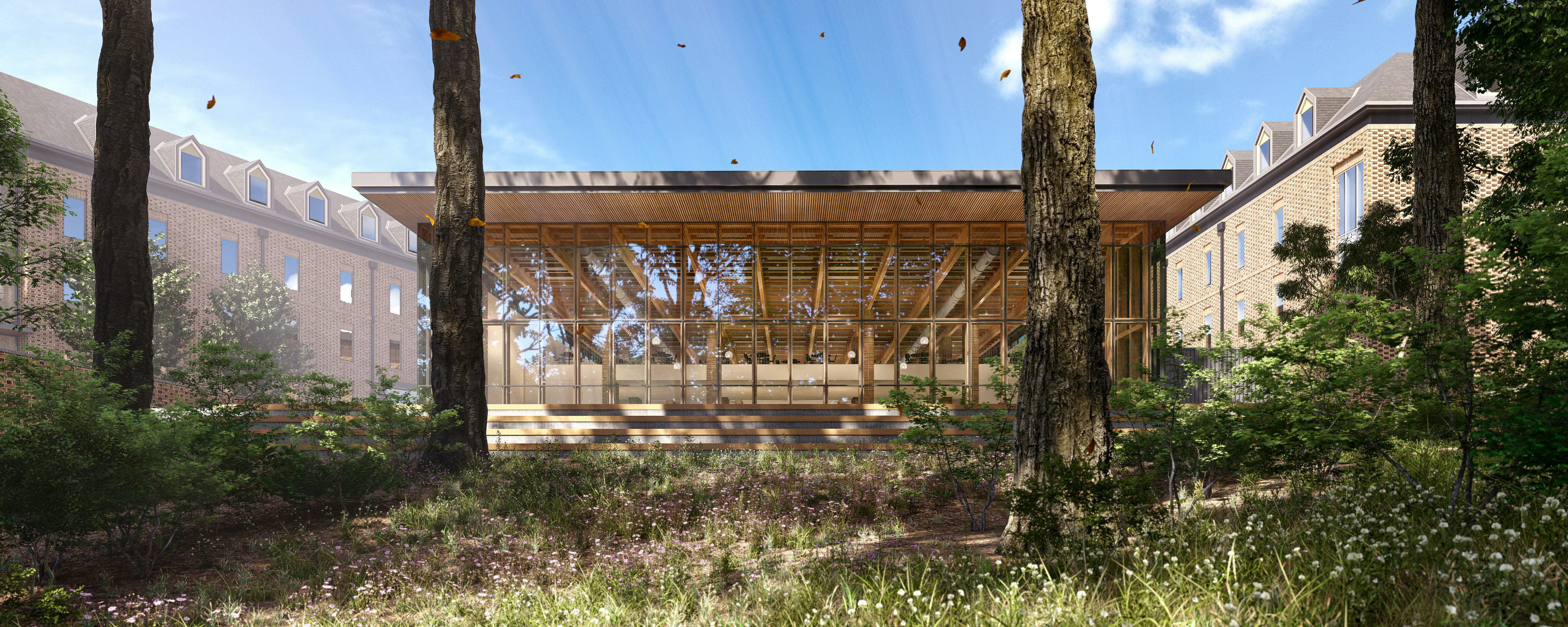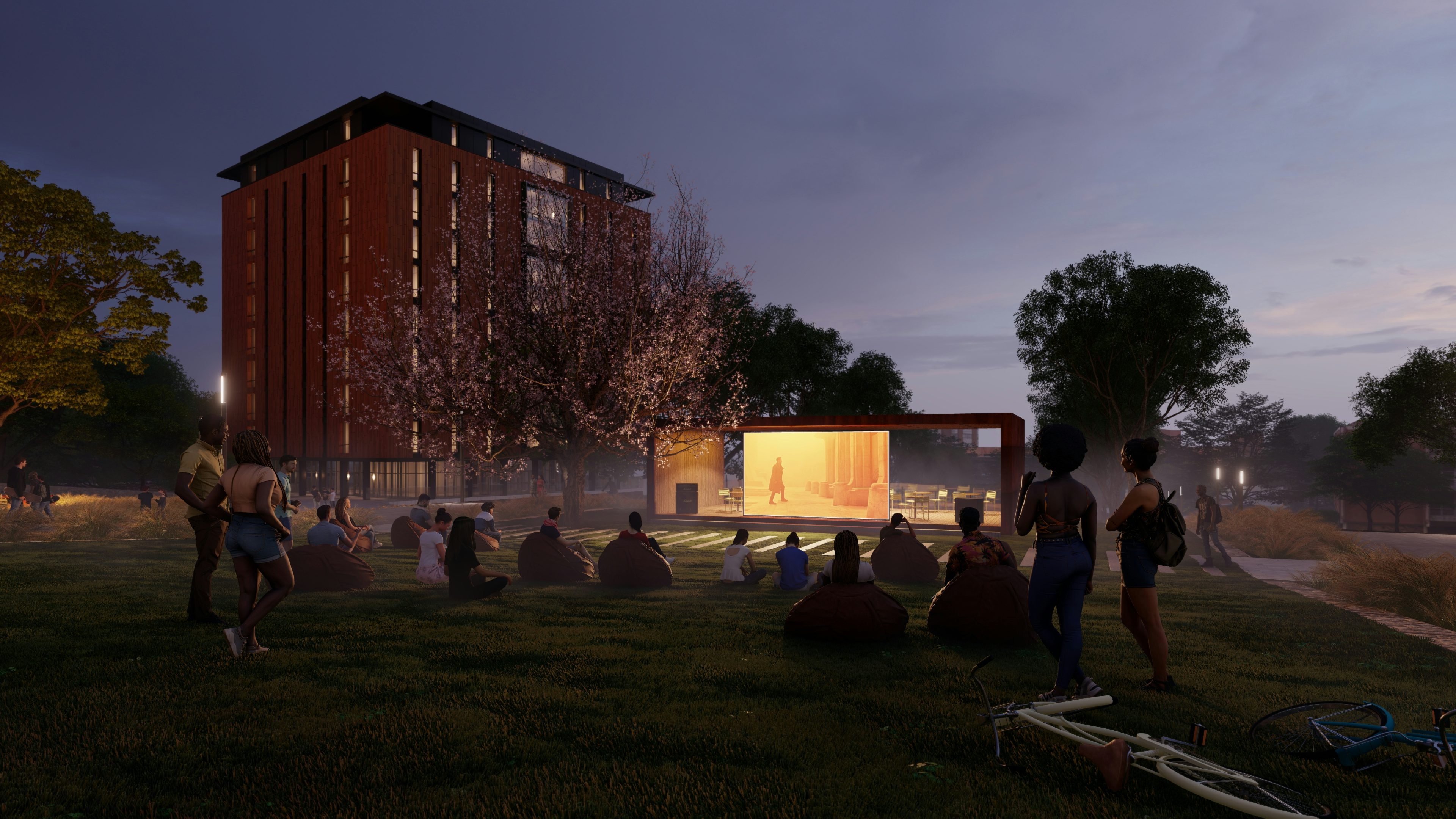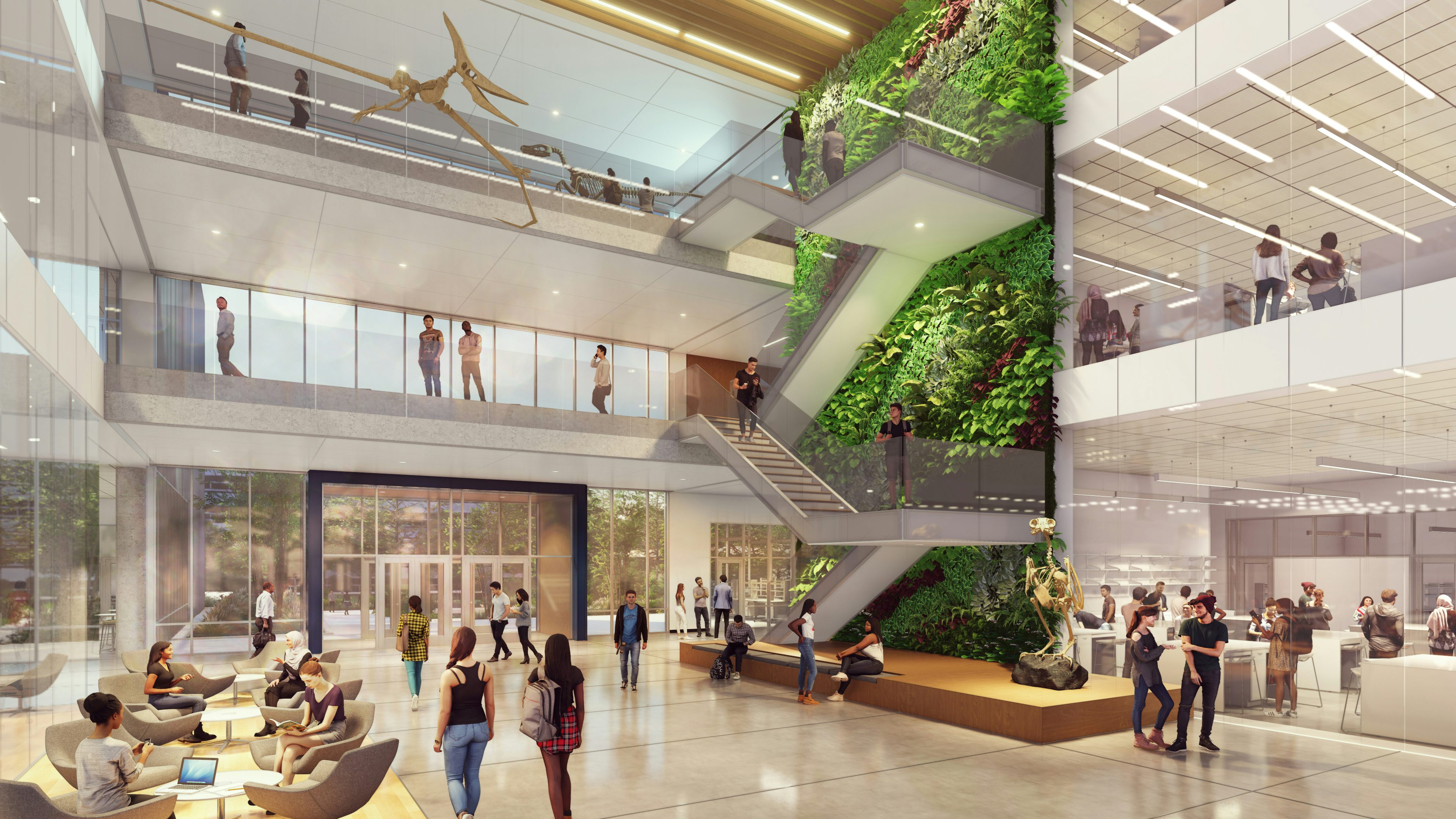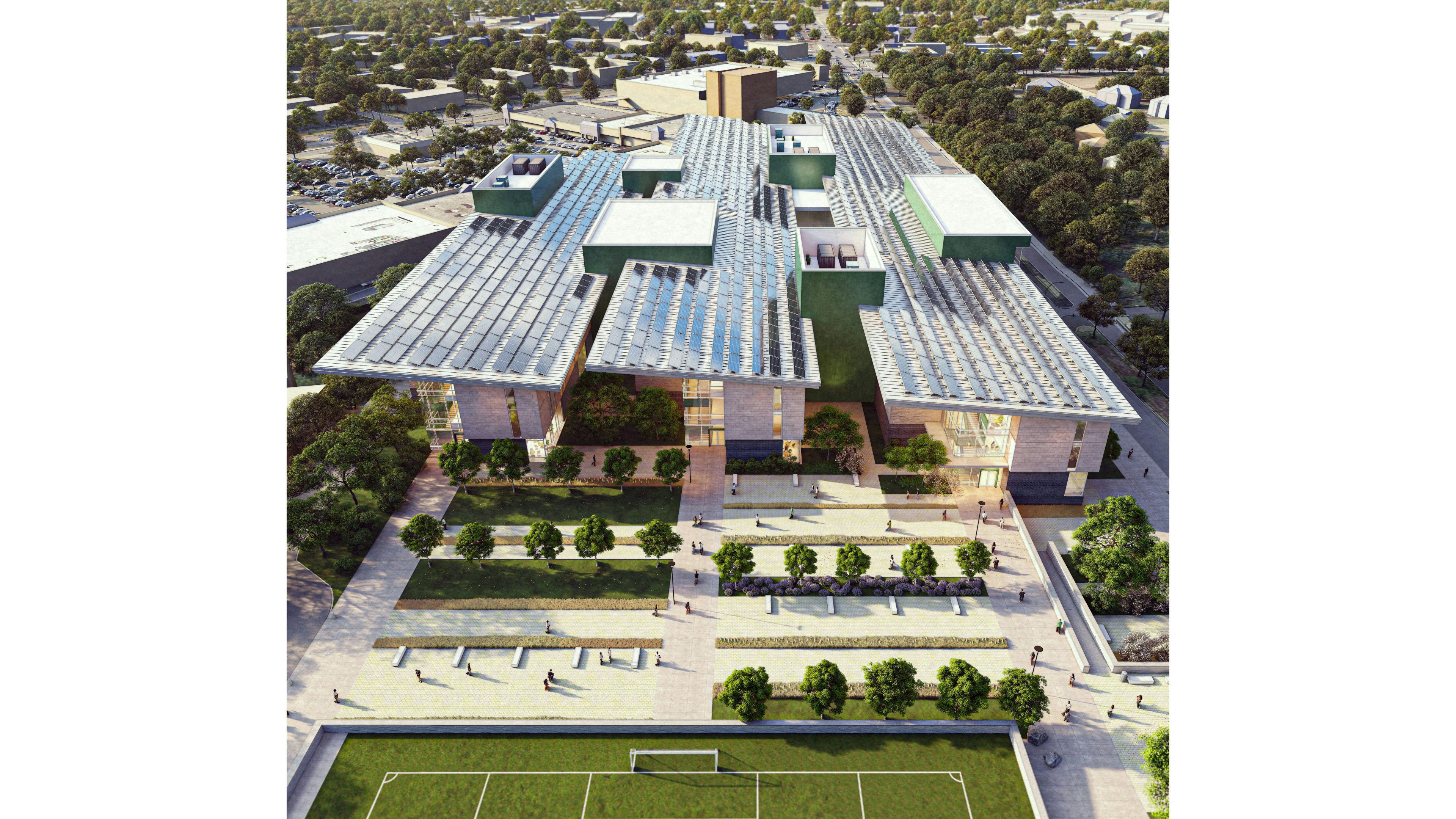Conceptual Renderings Pictured Above
Thomas Bates is VMDO’s Director of Visualization. Thomas grew up south of Seattle and earned his Bachelor of Architecture degree from the University of Oregon. Thomas has always been interested in art and design, but never quite thought he’d end up in architecture. Thanks to one very influential professor in college, Thomas realized architecture could suit his interests by allowing him to pursue a career in design and use his creative talents, while also offering future job security.
Before sharing about Thomas’ terrific visualization skills, let’s define what “Director of Visualization” means. When asked to define his job, Thomas shared, “I make pictures of unbuilt buildings.” Now I appreciate the simplicity of this statement, but also, if you’ve ever seen Thomas’ finished products or looked over his shoulder while working, you’d know his work is much more complex and not nearly as simple as that definition. An architect will present a design to Thomas, and he is then expected to produce a rendered image of that design. Sometimes Thomas is handed a fully fleshed-out design of a building. Other times, Thomas is handed a sketch on a napkin with some general ideas and is given the artistic freedom to design an entire building based on those minimal thoughts. Either way, Thomas never fails to achieve the magnificent work of bringing a design to life and creating a beautiful image of an unbuilt building.
Before arriving at VMDO, Thomas worked for an architecture firm in Portland, Oregon. This is when Thomas first got to delve into visualization and rendering in a professional setting. Previously, Thomas utilized visualization as a student because he found that creating a rendering of his work was a more efficient and effective way to communicate design intent than drafting floorplans and hand sketching perspectives. The firm in Oregon saw that Thomas had innate skills and abilities and gave him a platform to experiment and identify the best ways to incorporate visualization into the firm’s everyday work. Many times, it was these visuals that helped the firm win work and attract new clients.
Thomas then moved to Virginia and took a break from visualization. He joined VMDO as a designer, working on projects from schematic design through construction documents. After about three years, Thomas began to greatly miss his visualization work. He also became dissatisfied with the typical timeline of a project in the architecture industry—multiple years of design, documentation, and construction. Thomas realized he was much happier designing a building and bringing it to life through rendering in two-to-four-weeks, rather than two-to-four years. Thomas found the same satisfaction designing a building and perfecting a rendering as he did seeing nails put into wood and steel beams erected after years of working on a project. Therefore, with the support of the VMDO leadership team, Thomas decided to take a step back from traditional project work, and instead, paved his own way at VMDO by focusing solely on visualization work.
Since then, Thomas has solidified his role as Director of Visualization and has been creating beautiful work at VMDO for over 10 years. Thomas uses three main software programs when producing his work: Sketchup, Lumion, and Photoshop—in that order. Thomas will first build a 3D model of the design in Sketchup. Then he transfers that file to Lumion to set up lighting, place people into the scene, and add an array of additional artistic elements. And finally, Thomas will refine the rendered image in Photoshop, adjusting settings, such as contrast, tint, shadows, etc.
Depending on how far the project team has taken the design before handing it over to Thomas, it takes anywhere from 24 hours to one week to complete a single rendering. Currently, Thomas is a one-man visualization shop, working across all three of VMDO’s studios—K12, Athletics + Community, and Higher Education. Thomas always welcomes those who are interested in visualization work to assist on a project and help produce renderings, and this tends to occur on a project-by-project basis. Numerous individuals at VMDO share many of Thomas’ talents and are skilled at making renderings, and they look to him as the Director for guidance and support. Thomas finds joy in teaching and mentoring and is always flattered when someone is able to assist him with his visualization efforts for a certain project, has questions or needs help troubleshooting something, or simply just wants to explore new techniques and how they can improve their work.
When asked what his main goal is in his work, and when he can truly feel “proud” or “finished” with a rendering, Thomas shared, “The narrative of an image is the most important thing to me. If you can look at a rendering and imagine the story, and more importantly your own experience in that space, then you walk away with something that resonates with you personally.” Just like people get a song stuck in their head that they can’t stop singing, Thomas wants people to view his work and see a building that they can’t stop thinking about—and one that they insist upon building. The renderings Thomas produces give a client an idea of what their building could look like, and Thomas wants the client to love it so much that they’re willing to do anything and everything to see that building become a reality. This immensely benefits VMDO because, in all his work, Thomas’ visualization efforts help us all see how a design can be made into an actual building—and his efforts help current and future clients gain a better understanding of how their project will actualize into something beautiful.
We are so grateful for Thomas and his dedicated work and creative design. Thomas not only excels in visualization, but his goofy, compassionate, thoughtful, and intentional self makes our office a better place. We look forward to witnessing Thomas’ continued success and how it will make a positive impact in numerous communities.
